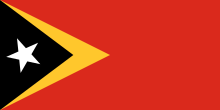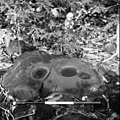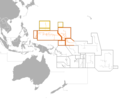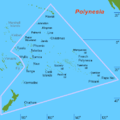
Back بوابة:أوقيانوسيا Arabic ܬܪܥܐ:ܐܘܩܝܢܘܣܝܐ ARC Portal:Polinèsia Catalan دەروازە:ئۆقیانووسیا CKB Portal:Ozeanien German Πύλη:Ωκεανία Greek Portal:Oceanía Spanish Portail:Océanie French Portal:Oseania ID Portale:Oceania Italian
The Oceania PortalOceania (UK: /ˌoʊsiˈɑːniə, ˌoʊʃi-, -ˈeɪn-/ OH-s(h)ee-AH-nee-ə, -AY-, US: /ˌoʊʃiˈæniə, -ˈɑːn-/ OH-shee-A(H)N-ee-ə) is a geographical region including Australasia, Melanesia, Micronesia, and Polynesia. Outside of the English-speaking world, Oceania is generally considered a continent, while Australia is regarded as an island or a continental landmass within that continent. Spanning the Eastern and Western Hemispheres, at the centre of the water hemisphere, Oceania is estimated to have a land area of about 9,000,000 square kilometres (3,500,000 sq mi) and a population of around 44.4 million as of 2022. Oceania is the smallest continent in land area and the second-least populated after Antarctica. Oceania has a diverse mix of economies from the highly developed and globally competitive financial markets of Australia, French Polynesia, Hawaii, New Caledonia, and New Zealand, which rank high in quality of life and Human Development Index, to the much less developed economies of Kiribati, Papua New Guinea, Tuvalu, Vanuatu, and Western New Guinea. The largest and most populous country in Oceania is Australia, and the largest city is Sydney. Puncak Jaya in Indonesia is the highest peak in Oceania at 4,884 m (16,024 ft). The rock art of Aboriginal Australians is the longest continuously practiced artistic tradition in the world. Most Oceanian countries are parliamentary democracies, with tourism being a large source of income for the Pacific island nations. (Full article...) Selected geographic article - East Timor, also known as Timor-Leste, officially the Democratic Republic of Timor-Leste, is a country in Southeast Asia. It comprises the eastern half of the island of Timor, the exclave of Oecusse on the island's north-western half, and the minor islands of Atauro and Jaco. The western half of the island of Timor is administered by Indonesia. Australia is the country's southern neighbour, separated by the Timor Sea. The country's size is 14,950 square kilometres (5,770 sq mi). Dili, on the north coast of Timor, is its capital and largest city. Timor was settled by Papuan and Austronesian peoples, which are reflected in the country's diverse mix of cultures and languages reflecting links to Southeast Asia and Melanesia. East Timor came under Portuguese influence in the sixteenth century, remaining a Portuguese colony until 1975. Internal conflict preceded a unilateral declaration of independence and an Indonesian invasion and annexation. Resistance continued throughout Indonesian rule and in 1999, a United Nations–sponsored act of self-determination led to Indonesia relinquishing control of the territory. On 20 May 2002, as Timor-Leste, it became the first new sovereign state of the 21st century. That same year, relations with Indonesia were established and normalized, with Indonesia also supporting East Timor's accession into ASEAN. (Full article...)Related portalsSelected article -Indo-Fijians (Fiji Hindi: फ़िजी के हिंदुस्तानी), also known as Indian Fijians (also colloquially known as "Findians" or "Findus"), are Fijian citizens of South Asian descent, and include people who trace their ancestry to various regions of the Indian subcontinent. Although Indo-Fijians constituted a majority of Fiji's population from 1956 through the late 1980s, discrimination and the resulting brain drain resulted in them numbering 313,798 (37.6%) (2007 census) out of a total of 827,900 people living in Fiji as of 2007[update]. Although they hailed from various regions in the subcontinent, the vast majority of Indo-Fijians trace their origins to the Awadh and Bhojpur regions of the Hindi Belt in northern India. Indians in Fiji speak Fiji Hindi also known as ‘Fiji Baat’ which is based on the Awadhi dialect with major influence from Bhojpuri. It is a koiné language with its own grammatical features, distinct to the Modern Standard Hindi spoken in India. The major home districts of Fiji's North Indian labourers were Basti, Gonda, Lucknow, Kanpur, Faizabad, Ballia, Ghazipur, Gorakhpur, Sultanpur, Siwan, Shahabad, Saran, and Azamgarh, in the present-day Awadh region of Uttar Pradesh and the present-day Bhojpur region of Uttar Pradesh, Bihar and Jharkhand. Others (in a smaller quantity) originated in the Telugu regions. A small contingent of indentured labourers came from Afghanistan and Nepal. A small amount of free immigrants also came from Gujarat, Andhra Pradesh, Telangana and Punjab. Many of the Muslim Indo-Fijians also came from Sindh and various other parts of South Asia. Fiji's British colonial rulers brought South Asian people to the Colony of Fiji as indentured labourers between 1879 and 1916 to work on Fiji's sugar-cane plantations. (Full article...)Did you know -
General images -The following are images from various Oceania-related articles on Wikipedia.
TopicsSubcategoriesThings you can doAssociated WikimediaThe following Wikimedia Foundation sister projects provide more on this subject:
In other languagesWikipedia in other languages used in Oceania:
More portals |
© MMXXIII Rich X Search. We shall prevail. All rights reserved. Rich X Search





































































